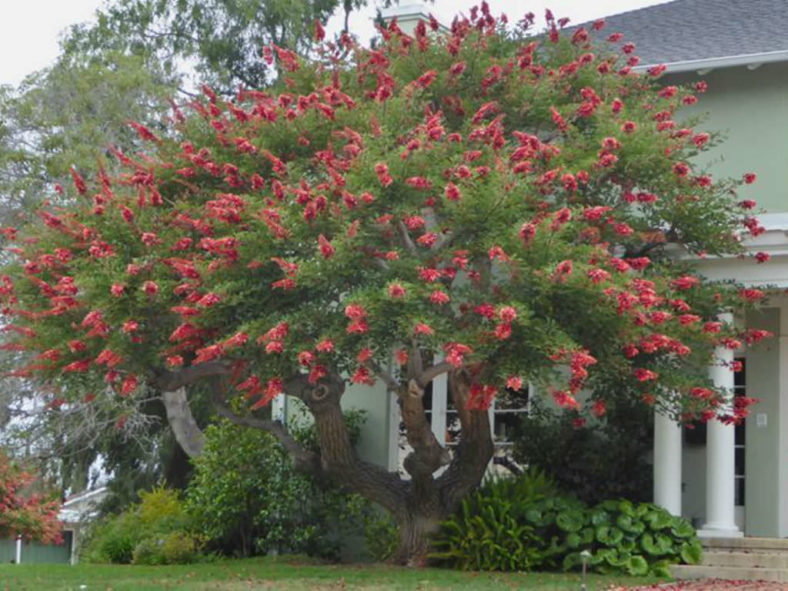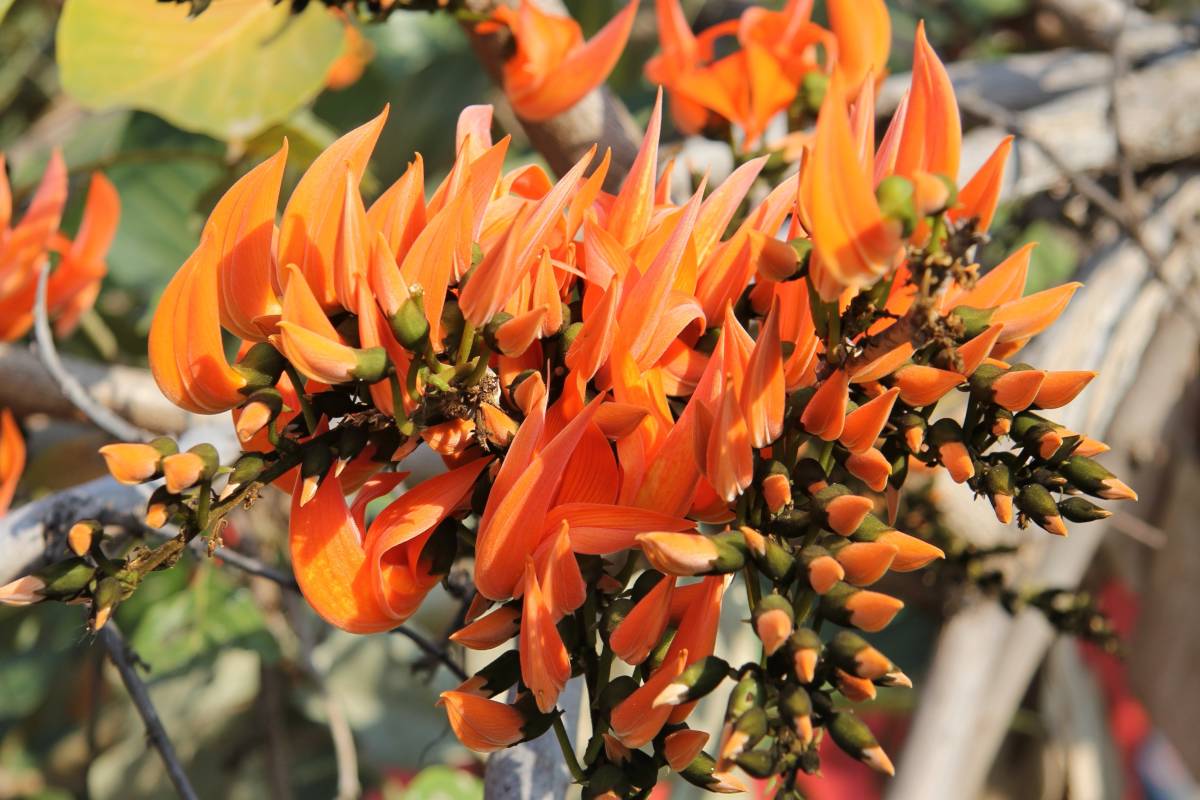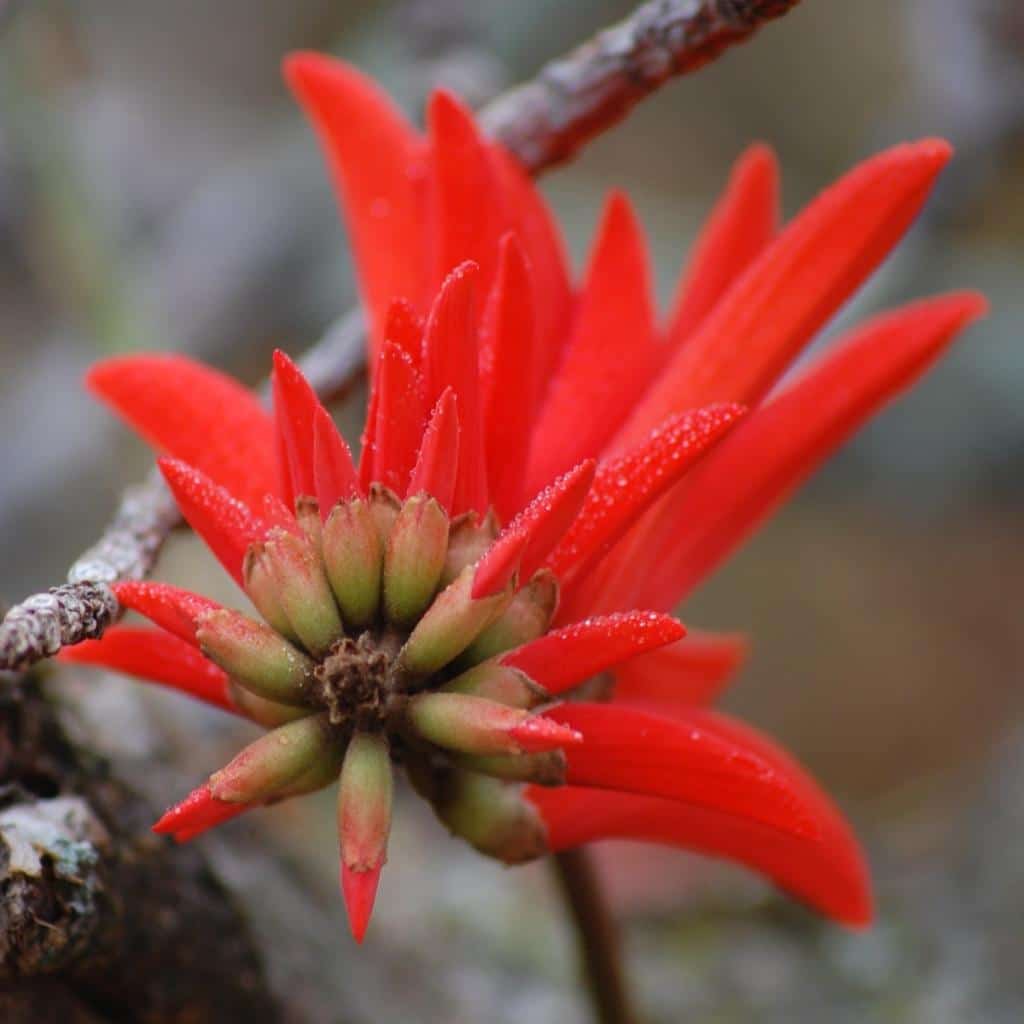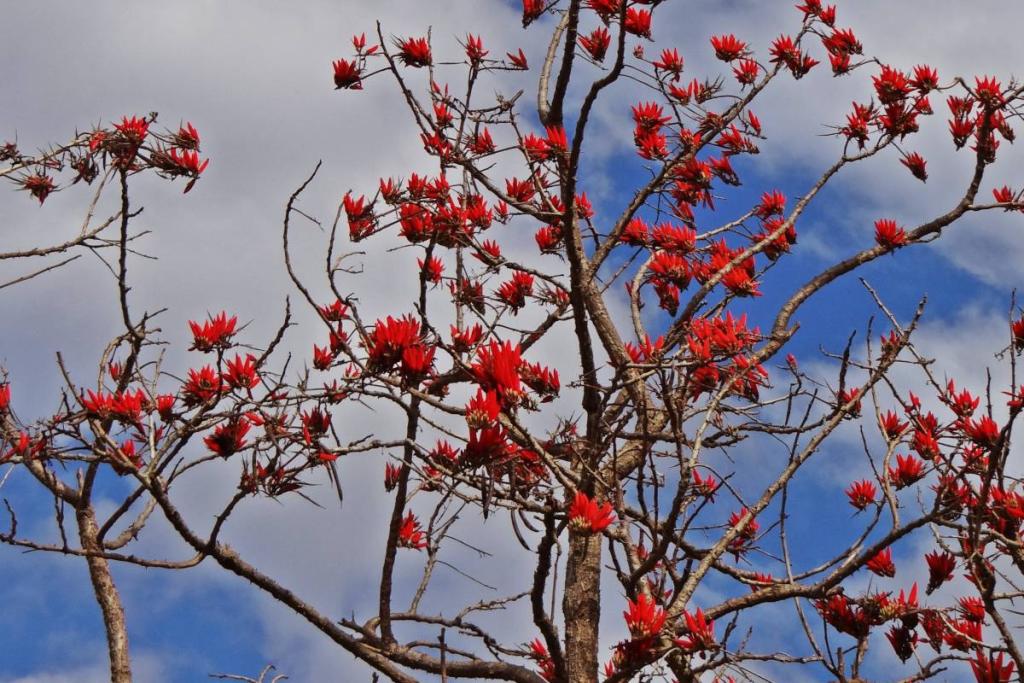Coral Tree Care Made Simple: Your Friendly Guide to a Thriving Tree

Coral trees (Erythrina spp.) have a way of stopping people in their tracks—those wild, torch-like blooms and gnarly branches can turn an ordinary street or backyard into something almost primeval. But behind that drama lies a plant with its own set of stubborn demands and quirky pitfalls. After three decades of hands-on coral tree wrangling—planting, rescuing, pruning, sometimes cursing—I’ve distilled everything I wish someone had told me at the start into this roadmap. This isn’t your average care sheet; it’s the field guide built from muddy boots, frost-bitten fingers, and more than one rescue mission after a rookie mistake.

Bookmark this for when you’re knee-deep in clay soil or staring down a wilting sapling on a July afternoon. Let’s dive deeper than the usual “sunny spot, don’t overwater” clichés.
1. Coral Trees: Why They Lure and Challenge Gardeners
My first encounter with a coral tree was back in 1994—a gnarled Erythrina crista-galli towering over a neighbor’s fence, petals scattered like confetti across cracked pavement. I was hooked instantly by the spectacle but clueless about what it took to achieve it. These aren’t plug-and-play ornamentals; think of them as living sculptures that demand collaboration.
Coral trees reward attention to detail but punish neglect or impatience:
- Flowers: Their fiery displays attract hummingbirds and humans alike.
- Structure: With age and good pruning, they develop dramatic silhouettes worthy of any garden magazine.
- Longevity: Given proper care, they’ll outlast most trends—and possibly your mailbox.
But ignore their needs? You’ll quickly trade those blooms for yellow leaves or snapped limbs after the first real windstorm.
2. The Fundamentals You Can’t Fake
Picking the Right Species (and Why It Matters)
Your choice isn’t just about looks—it shapes everything from future root problems to winter survival:
- For tight spaces: Erythrina x bidwillii rarely exceeds 10–12 feet; perfect for urban lots.
- For “statement” trees: Erythrina caffra can hit 40 feet with an equal spread.
- Wildlife magnets: Erythrina herbacea might look shrubby but brings in hummingbirds by the dozen.
Here’s where experience trumps catalog blurbs: local nurseries sometimes mislabel species. Always check mature size at reputable arboretums (the Los Angeles Arboretum has an excellent reference grove).
Climate Quirks
If you garden anywhere frost is more than rare (“hard freeze” means below 28°F), treat coral trees as semi-tender—even “cold-hardy” types can lose tips or die back to ground level if unprotected. In Sacramento’s brutal winter of 2007, I lost two established E. crista-galli aboveground despite thick mulch—but both resprouted from roots come spring.
Soil & Drainage: The Non-Negotiables
Ignore glossy how-to diagrams showing coral trees thriving in heavy clay—they simply don’t unless you intervene aggressively:
- If water lingers more than an hour after rain? Dig up and build a mound (at least 8" above grade) before planting.
- For new beds: Mix coarse sand and bark fines into sticky soils until water drains freely.
One failed experiment: I tried “winging it” with native adobe clay in my second year gardening—within months, every leaf yellowed and roots stank like rotten eggs. Lesson learned: drainage trumps everything else.
Sunlight: No Shortcuts Here
Six hours minimum sunlight is gospel—more is better if you want flower spikes visible from down the block. Light shade works for foliage but slashes bloom count by half (I measured over three seasons).

3. Starting Smart: Insider Planting Protocols
This is how seasoned pros avoid rookie regrets:
A) Inspect Before You Buy
Look for signs of root circling (roots wrapping around inside pot walls). If you see this:
“Don’t be gentle.” That’s what my mentor Steve said at our city nursery back in ’02—he’d pull apart bound roots mercilessly before planting so they didn’t strangle themselves later.
B) Planting Day
- Dig wider rather than deeper—the finished hole should be twice as broad as the root ball but only as deep.
- Position so root flare sits just above soil line—not buried!
- Backfill halfway; water to settle; finish filling and water again.
- Mulch lightly (2–3"), keeping mulch at least four inches away from trunk base to prevent rot.
Tip: If you’re planting bare-root stock (sometimes available mid-winter), soak roots for two hours before planting.
C) Staking Young Trees
Stake only if site is windy or trunk flops under its own weight—use soft ties that allow some movement; remove supports after one growing season to encourage strong trunks.
4. What Goes Wrong—and How Veteran Growers Fix It
Over thirty years I’ve seen every blunder twice:
Overwatering Fiascos
Root rot is THE #1 killer among beginners—in my own tally across client gardens, nine out of ten dead young coral trees were loved too much with hoses.
Fix: Water only when top few inches are dry during year one; thereafter only during droughts longer than two weeks.
Pruning Paralysis
Skipping annual pruning leads to tangled messes prone to wind breakage—a disaster waiting to happen in storm-prone areas.
Pro Move: After blooms drop (usually late spring), stand back and visualize what shape you want next year; remove crowded branches first, then shorten overly long shoots by up to half their length without fear—the tree rebounds vigorously!

Frostbite Panic
If tips blacken post-frost but trunk bark remains green underneath when scratched? Resist yanking it out! Wait until early spring then cut back past damaged wood—the tree likely rebounds from living tissue below.
Quick case: My own Erythrina caffra lost all top growth in January ‘13 after freak snow; by June fresh shoots emerged along lower trunk—patience paid off!
Pest Outbreaks
Aphids are relentless on new shoots here each March-April—a sharp blast from a hose every morning keeps numbers low without chemicals.
For scale insects: Scrape off visible clusters with gloved hands or spray with horticultural oil at dusk; repeat weekly till gone.
5. Going Pro: Advanced Techniques for Show-Stopping Results
When basic care becomes second nature, these tweaks separate casual growers from true coral-tree whisperers:
Pruning Like an Artist
My target shape? An open vase/umbrella form that channels sunlight through every canopy layer:
- Remove crossing branches ruthlessly;
- Thin interior stems yearly;
- Head-back main leaders if height threatens power lines or rooflines (don’t wait for disaster!).
One thing most guides skip: Coral trees heal rapidly—even hard cuts made right after flowering rarely result in dieback if tools are sharp and clean.
Fertilizing Wisely
Overfeeding = leggy green growth instead of flowers—trust me, I learned this the hard way using high-nitrogen blends meant for lawns!
What works best:
- Each March apply a single dose slow-release balanced fertilizer (10-10-10 NPK).
- In alkaline soils or where leaves yellow between veins? Add chelated iron once annually until color returns.
Compost lovers rejoice—a top-dress each spring with finished compost improves both vigor AND flower duration without chemical burn risk.
Drought-Proofing Irrigation
Install drip emitters on timers spaced around canopy edge—not directly against trunk—to train roots outward/deepward. Deep soakings every two weeks outperform shallow daily sprays by miles when establishing saplings during hot spells.
6. My Must-Have Tools & Resources—Tested Over Decades
You won’t need fancy gadgets—but quality matters:
| Tool | What It Solves | Personal Experience |
|---|---|---|
| Felco #2 pruners | Clean cuts up to thumb-thick wood | Still razor-sharp after 20 years |
| Fiskars loppers | Branches up to wrist-thick | Saved my shoulders countless times |
| Japanese pull saw | Precision cuts inside dense canopies | Essential for old/awkward limbs |
| Drip irrigation kit | Stress-free deep watering | Paid itself off first summer |
| Rubber mulch ring | Weed suppression/soil temp moderation | Outlasts wood chips near base |
On references: For California/Southwest climates nothing beats UC Davis’ online extension bulletins—for tropical regions try Queensland Agriculture’s Erythrina guides online (both updated regularly).

7. Lessons From Real Gardens—Not Just Theory
Let me share four stories straight from clients’ yards:
Janet’s Overwatered Sapling
She nearly drowned her $15 box-store bargain thinking daily drinks = healthy start (“It was so hot out!”). Leaves dropped en masse by July; digging revealed soggy anaerobic muck around roots.
We dug it up onto an elevated sand mound, waited two days for roots to air-dry slightly… replanted… watered deeply once per week max thereafter.
That autumn brought new growth—and Janet now swears by her kitchen timer reminder system!
Carlos vs LA Frost
His juvenile caffra was hit hard one cold snap (“But I thought LA never froze?”). Black tips everywhere—but we left alone till March then trimmed past dead zones; mulched extra-thick ahead of next winter as insurance.
Tree rebounded fast come May—and Carlos invested $18 on reusable frost blankets found at his local hardware store clearance aisle!
Mina Boosts Blooms Naturally
Determined not to use synthetics, Mina top-dressed her hybrid with homemade compost plus worm castings each March and planted alyssum under its dripline instead of bare mulch.
Result? Slightly later blooms compared to neighbors’ chemically-fed tree—but hers lasted longer AND hosted more butterflies all summer!
Mike Saves His Sidewalk
Inherited a mature coral tree six feet from his driveway already flexing concrete slabs skyward…
We spent three seasons carefully pruning surface roots away while rerouting irrigation further into yard; eventually replaced cracked slab with pavers atop gravel base—forgiving flex instead of future repairs!
Lesson learned: always plan ahead on placement—or get creative retrofitting solutions later!
8. Troubleshooting Table—from Leaf Drop Mysteries to Broken Limbs
The trick isn’t avoiding problems—it’s spotting them early:
| Problem | Field Diagnosis | Rescue Tactics |
|---|---|---|
| Yellow leaves/drop | Soggy soil/overwatering | Pause watering till dry below surface |
| Iron deficiency | Add chelated iron + compost | |
| No flowers | Too little sun/pruning missed | Move sapling/prune post-bloom |
| Aphid takeover | Sticky residue/curling new leaves | Hose blast mornings/neem oil weekly |
| Branch breakage | Heavy tips/multiple leaders | Prune hard post-flowering |
| Slow growth | Crowded/confined roots | Transplant further out/feed organically |
Remember what my old supervisor used to say during site visits: “Most disasters are slow-motion train wrecks—not sudden surprises.” Early intervention nearly always pays off!

9. Your Season-by-Season Action Checklist
To keep things foolproof (and my memory honest), here’s what I stick on my shed wall each year:
1️⃣ Pick species suited for your climate/space
2️⃣ Choose full-sun location >12 feet clear from concrete/buildings
3️⃣ Amend soil for fast drainage BEFORE planting
4️⃣ Plant so root crown sits above grade/mulch lightly
5️⃣ Water consistently year one ONLY—then taper off dramatically
6️⃣ Stake if necessary/remove within twelve months
7️⃣ Schedule annual prune immediately after bloom drop-off
8️⃣ Watch weekly for aphids/scales/frost signs April–September
9️⃣ Feed once per year using balanced fertilizer/compost
🔟 Log key weather events/pest outbreaks—you’ll spot patterns fast!
Bonus tip? Use smartphone calendar reminders tied to climate cues (“First heatwave,” “Last frost date,” etc.).
10. Final Thoughts From Three Decades Among Coral Trees
No two gardens—or even two seasons—with these bold beauties ever play out quite the same way! Don’t sweat perfection or rigid rules handed down online; observe closely and adapt tactics based on your yard’s quirks instead.
The most spectacular coral trees I’ve ever seen came not from textbook methods but persistent tinkering—a willingness to adjust routines mid-stream whether facing unexpected droughts or surprise blossom explosions thanks to an unusually warm spring.
Above all else? Consistency beats intensity every time—a little well-timed attention trumps sporadic heroics tenfold over decades-long lifespans these giants offer us lucky enough to grow them.
Still wrestling mystery symptoms halfway through summer? Snap pictures, jot notes—and reach out here anytime! Or tap local botanic experts who know your microclimate better than anyone behind a desk three states away ever could.
Here’s wishing you decades of blazing red blooms unfurling outside your window—and stories worth sharing long after those first petals fall!



